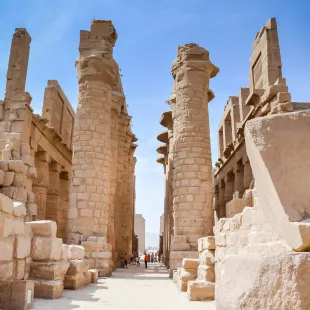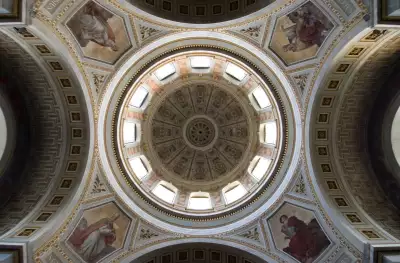Experience the Wonders of the Nile: Cairo to Aswan

Discover the history and architecture of the new capital, Cairo.
Egypt is a country full of spectacular sights and incredible history, with the Nile – the source of all its life – running through its heart. This makes a Nile River cruise the very best way to see its wonders, travelling from the delta of Lower Egypt including Cairo and the pyramids, and heading into Upper Egypt with its ancient cities, temples, and tombs.
Cairo
The modern capital of Egypt stands at an important point along the course of the river. Most famously, it is home to the pyramid complex at Giza, one of the most famous sites in the world. To the south of the city is the original ancient capital of Egypt, Memphis, while to the east is the medieval citadel surrounded by the old city.
The modern city is a mix of many different architectural styles and cultures, from the beautiful narrow streets and grand monuments of old Islamic Cairo to modern landmarks like Cairo Tower and Tahir Square. Naturally it’s also home to the largest collection of ancient Egyptian artefacts in the world, including the golden mask of Tutankhamun, housed at the Egyptian Museum.
Temples And Lost Cities
The winding route of the Nile takes you past many incredible ancient sites as you head into southern Egypt, including the ruins of Amarna, the new capital built by the legendary pharaoh Akhenaten to his sun-worshipping cult. There are also the grand temples of Abydos dedicated to Osiris, lord of the dead, and the beautiful temple of Hathor at Dendera, the best-preserved temple complex in Egypt.

Luxor
As the site of the ancient city of Thebes, once the capital of Egypt in the Middle and New Kingdom periods, Luxor is filled with incredible historical artefacts. The temples of Luxor and Karnak are some of the most impressive you can see, with forests of columns and soaring obelisks and statues standing right in the heart of the city. You can learn about the history of the mummy at the Mummification Museum and see more incredible artefacts at the Luxor museum.
A Queen’s Temple And A Valley Of Kings
On the opposite bank of the Nile to Luxor is a stunning necropolis of ancient tombs and temples, including the incredible Mortuary Temple of Hatshepsut, one of the first female pharaohs as well as one of Egypt’s most successful rulers. The structure was once buried beneath a mountain of sand but is now uncovered and restored to reflect its former glory.
Hidden in the Theban Hills behind Hatshepsut’s temple is the Valley of the Kings, resting place of the pharaohs of the New Kingdom. Here you can find the legendary tomb of Tutankhamun with its mythical curse, along with many great rulers of the last phase of the ancient Egyptian culture.

Aswan
This city once marked the furthest southern frontier of ancient Egypt. Today it forms another sort of barrier at the Aswan Dam, which created the vast Lake Nasser reservoir. Here you can explore the temple islands of Philae and the extraordinary sight of the Unfinished Obelisk still embedded in its rock.
South of the dam on the shores of Lake Nasser stands one of Egypt’s most impressive monuments – the temples of Abu Simbel. Built in the 13th century BCE by Rameses the Great, they commemorate himself and his wife, Nefertari, as well as the king’s victory at the Battle of Kadesh.
Egypt is a beautiful and fascinating place. From the waters of the Nile to the Pyramids of Giza, there is history everywhere and something new to discover. We have a collection of tours and cruises to Egypt for you to browse at your leisure. If you have any questions, please do not hesitate to contact us.






